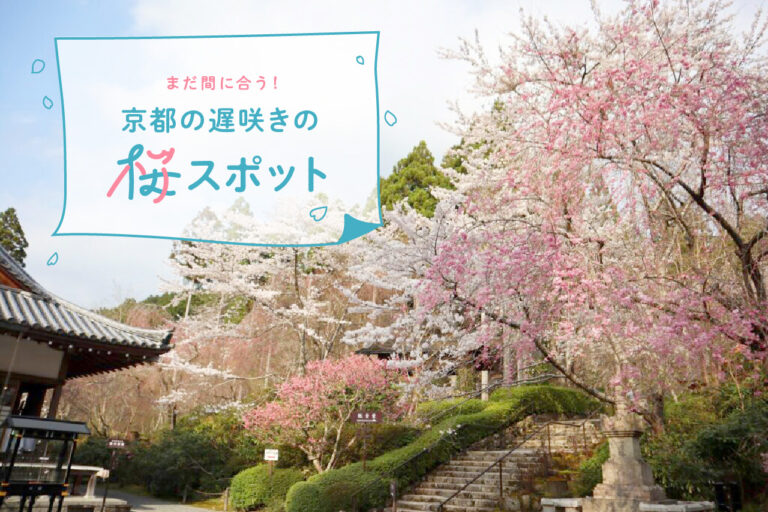
[2025] It's Not Too Late to Enjoy the Late Blooming Cherry Blossoms in Kyoto! Late Blooming Cherry Blossoms in Kyoto...
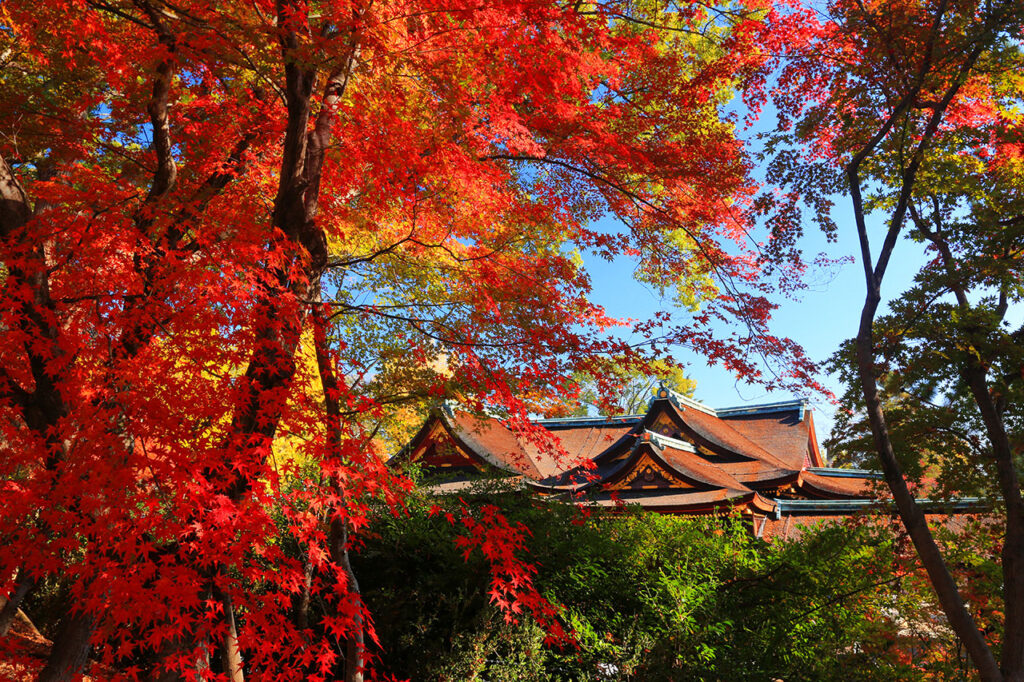

The peak of the autumn foliage season has passed and things have settled down in Kyoto. Did you know that there are actually many places where the best time to view the autumn leaves is from late November to early December?
In this issue, we will introduce a selection of places recommended by our local editorial staff for best viewing at a slightly later time of the year from our autumn foliage specials.
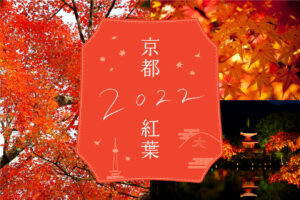
From the best places to view the autumn leaves to the worst spots, we will guide you along with the best time to view the leaves.
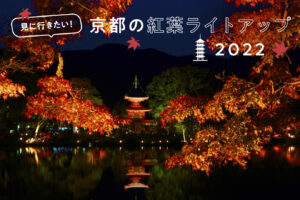
Information on lighting up
The temple was founded in 796 (Enryaku 15), two years after the transfer of the capital to Heian by Emperor Kammu, by the national government as a temple for national protection.
It is also known as a famous place for autumn leaves, and the contrast between the red and yellow trees and the five-storied pagoda is a must-see. During special visits at night, the precincts are lit up, and you can enjoy a fantastic scenery that is different from the daytime.
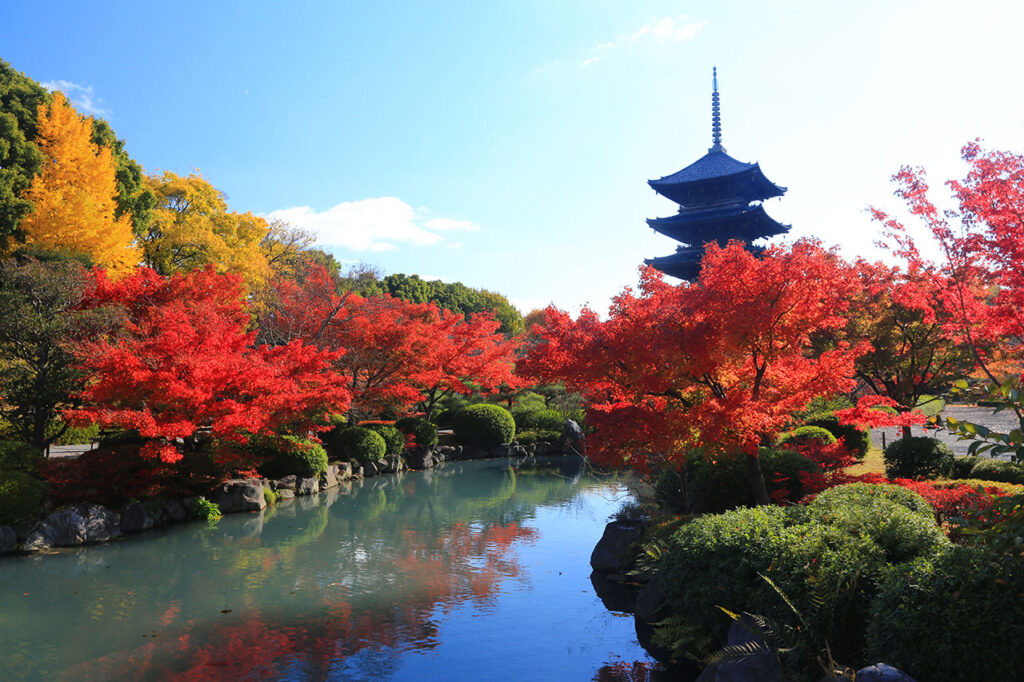

The park was opened in 1995 to commemorate the 1200th anniversary of the founding of the Heian Capital. The park is dotted with spots where visitors can enjoy a rich natural environment that one would not expect to find in the center of an urban area, including a lawn and a Japanese garden, Suzaku-no-niwa.
Visitors can enjoy a leisurely stroll around the Suzaku Garden and the riverside playground while admiring the tree-lined avenues of autumn leaves.
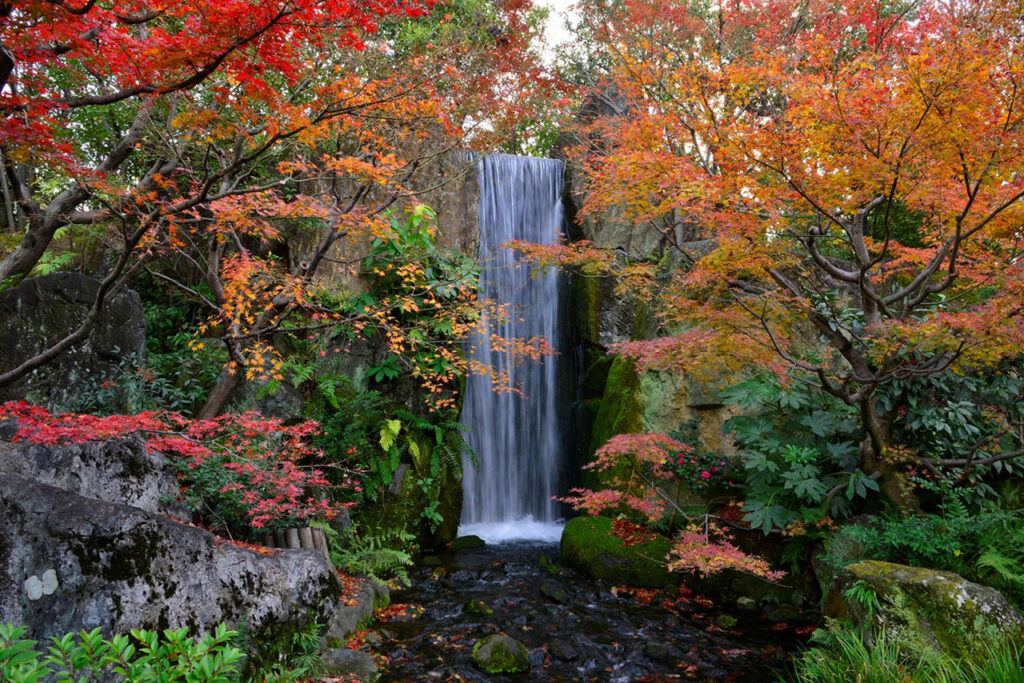

The temple was originally built in 1052 by Fujiwara no Yorimichi, who converted Uji-den, the villa of his father Fujiwara no Michinaga, into a temple. The main statue, a seated Amida Nyorai (Amitabha Nyorai) by Sadacho, a Buddhist priest who established the Yosegi-zukuri technique, is known as a representative masterpiece of Japanese-style sculpture.
During the fall foliage season, the maple trees along the Aza-ike Pond in front of the Phoenix Hall change color and are reflected on the water surface along with the Phoenix Hall, creating a beautiful scene.
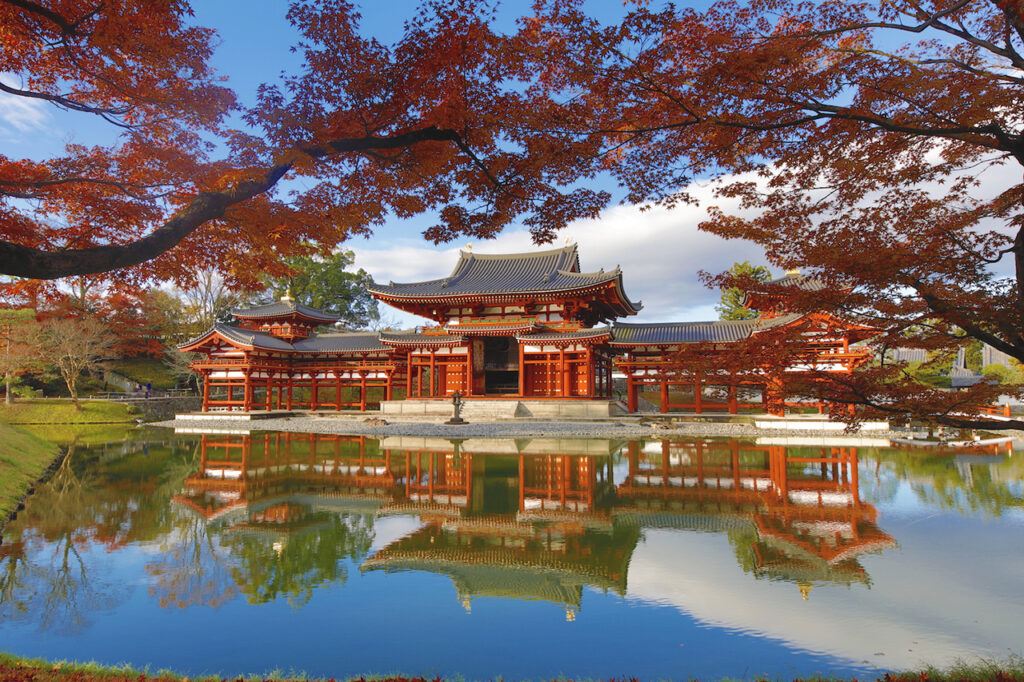

The origin of the temple is a pagoda that was built by Ashikaga Yoshimitsu in 1379 to commemorate the founding of Hodan-ji Temple. Hodan-ji Temple was abolished during the Onin War, but Rikao-in Temple is believed to be the only one that survived.
The dry landscape garden with Arashiyama in the background, which can be seen from the reception hall rebuilt in the Meiji period, is a must-see. The interior of the reception hall is decorated with fusuma paintings with the theme of oak leaf veins completed in April 2020, which is also a must-see.
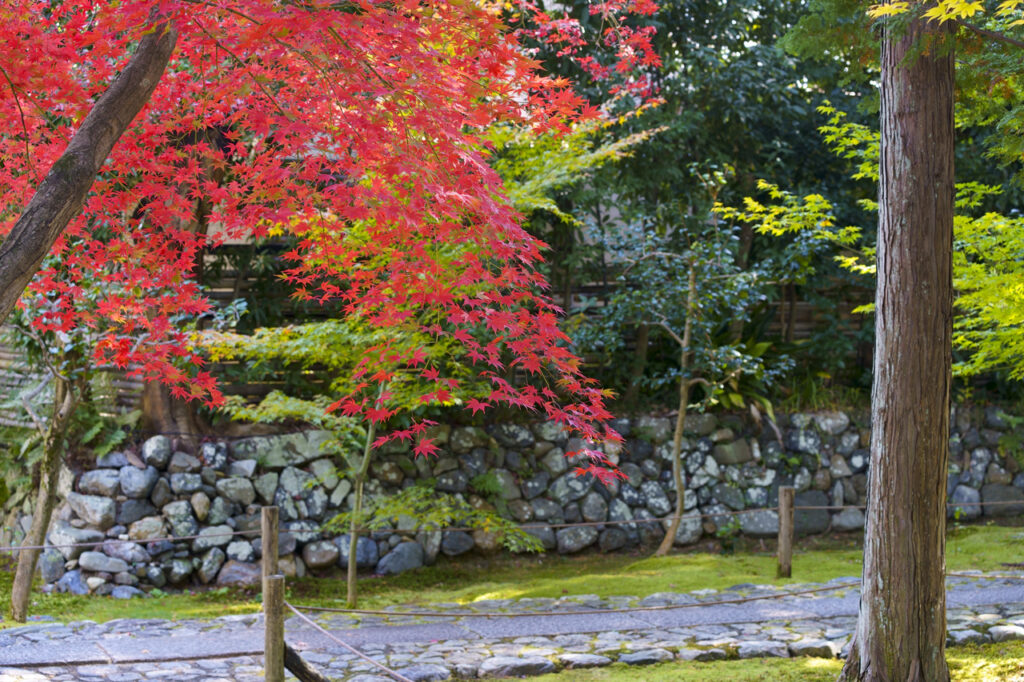

Nomiya Shrine, known as the god of marriage, is a shrine with a long history that was described in the Tale of Genji. Visitors can feel the elegance of the Heian period when they visit the shrine grounds surrounded by a black wooden torii gate and a small bush fence.
In autumn, the sky is decorated with maple trees, which contrast fantastically with the black wooden torii gate. One can recall the autumn foliage viewing that must have been enjoyed by the aristocrats of the Heian period (794-1192).
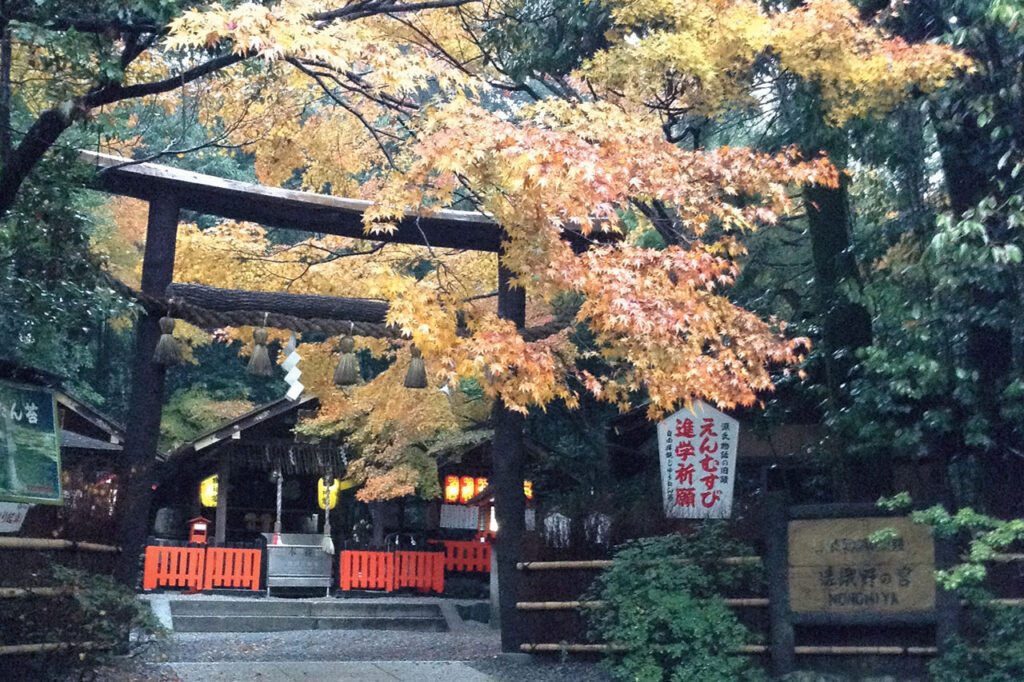

Kitano-Tenmangu Shrine is the head shrine of Tenmangu Shrine and Tenjin Shrines, which number approximately 12,000 throughout Japan, and is popularly known as "Kitano Tenjin-sama" (the God of Heaven in Kitano). The shrine's deity, Sugawara Michizane, is revered as the god of learning.
The maple garden on the west side of the temple grounds consists of a natural forest and a part of the "Godoi," an earthen mound built by Toyotomi Hideyoshi, a feudal lord of the Edo period. About 350 maple trees are in full autumn color, and the view of the surface of the Kamiya River, which runs north-south through the garden, dyed red is breathtaking.


It is said to be one of the oldest shrines in Kyoto, and there is a record of the repair of the shrine's tamagaki (stone wall) in 90 B.C.
The Tadasunomori forest, which stretches across the shrine grounds, is shrouded in a mysterious atmosphere, with maple trees and zelkova and other trees turning the forest red and yellow. The best time to view the leaves is relatively late, from early to mid-December, allowing visitors to enjoy the autumn colors in a relaxed atmosphere.
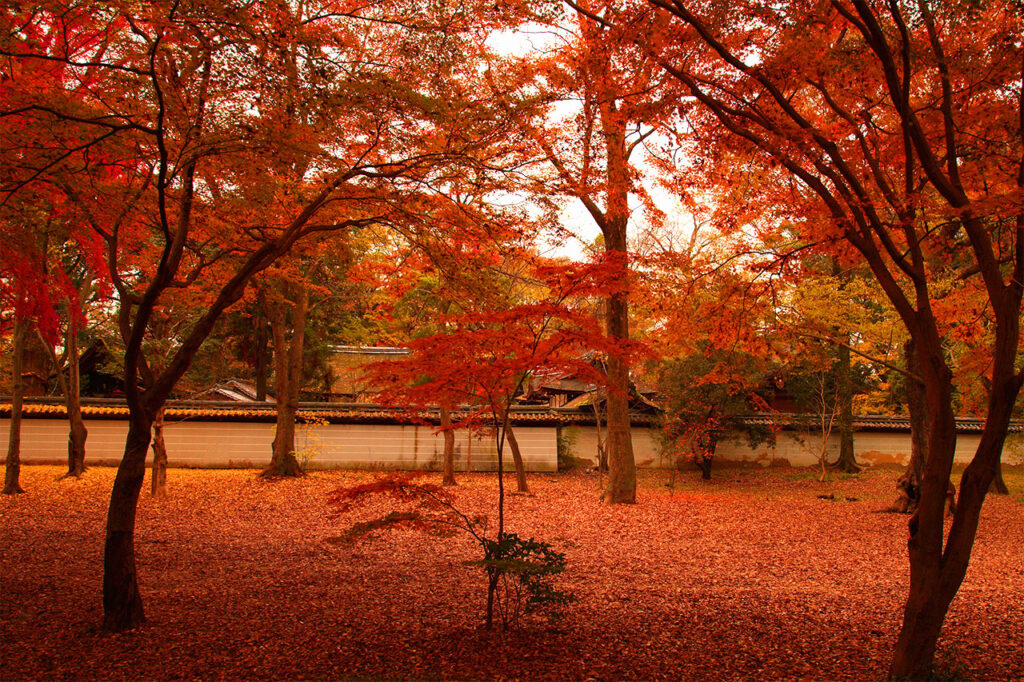

The castle was built in 1603 by Tokugawa Ieyasu, the first shogun of the Edo Shogunate, and has appeared on numerous occasions in history, including in 1867 when the 15th shogun, Yoshinobu Yoshinobu, announced his intention to return to power in the form of the Great Restoration in the palace. The Ninomaru Palace, a national treasure, is home to approximately 3,600 paintings by the Kano school, and its luxurious and gorgeous space is overwhelming. It is also famous for its autumn foliage, with a variety of trees, including ginkgo and maple, turning beautiful colors.
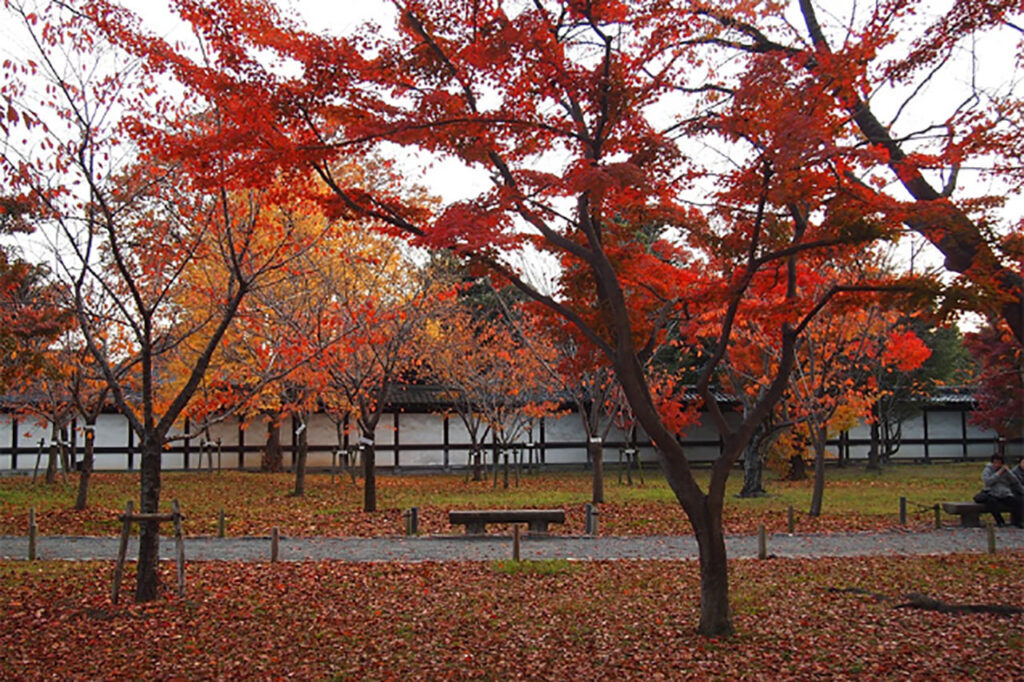

Over 600 interviews per year! An order site carefully selected by the editors who knows Kyoto and Shiga.
nowOfficial LINE friend registration500 yen OFF coupon is being issued!
Distributed every Friday morning at 8:00 am! From new restaurant information to event information that we want to share with you, We deliver articles about Kyoto that are useful to know. About 20,000 people have registered.Click here to add a friend!
 News
News Feature article
Feature article Featured event
Featured event